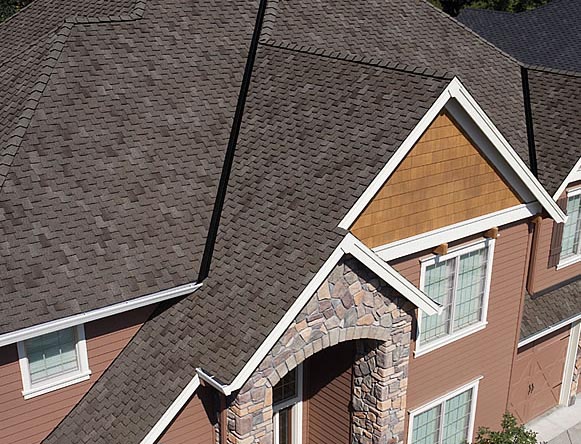The Advantages of Working with Gainesville FL Roofing Companies
The Advantages of Working with Gainesville FL Roofing Companies
Blog Article
Best Practices for Ensuring Proper Roofing Air Flow
A balanced intake and exhaust vent ratio, generally 1:300, plays a pivotal duty, with intake vents ideally placed at the lower side of the roof for cool air entry and exhaust vents at the height for warm air departure. Keeping insulation away from vents is important to protect against airflow restriction.
Understand Air Flow Essentials
Appropriately comprehending air flow essentials is crucial for guaranteeing the durability and performance of roof. Reliable air flow alleviates dampness buildup and temperature extremes in the attic room, both of which can lead to considerable structural damage in time. A well-ventilated roof covering assists in stopping usual problems such as mold and mildew development, timber rot, and ice dams, which can endanger the honesty of the roofing products and the underlying frameworks.
The main objective of ventilation is to facilitate the motion of air, enabling a consistent exchange between the exterior and interior settings. This balance is accomplished through a combination of consumption and exhaust vents that work with each other to preserve ideal air flow. Consumption vents, generally located along the eaves or soffits, enable fresh air to enter the attic area, while exhaust vents, commonly located at or near the roofing system ridge, allow hot, humid air to get away.
Secret aspects influencing the performance of roof covering ventilation consist of appropriate placement, adequate sizing, and guaranteeing that both intake and exhaust vents are unhampered. Regular examination and upkeep are essential to identify possible obstructions, damage, or inadequacies in the ventilation system, thus safeguarding the roof covering's efficiency and longevity.
Kinds Of Roof Vents
Roof covering vents play an essential function in keeping reliable attic air flow and, by expansion, the overall health and wellness of the roof system. Different kinds of roof covering vents are offered, each with distinct benefits customized to details roofing requirements.

Soffit vents are set up under the eaves and job in tandem with roofing system vents to guarantee a well balanced consumption and exhaust system. By allowing cooler air to get in from below, soffit vents assist in the expulsion of warm air through top vents. Gable vents, located on the exterior walls of the attic room, offer an additional reliable option, particularly in homes with saddleback roofs.
Examine Your Existing Air Flow

Following, think about the age and condition of your roof covering products and ventilation parts. Older systems may not abide by current building ordinance or may have weakened gradually, decreasing their effectiveness. Conduct a complete evaluation to recognize any type of indicators of deterioration, such as rust, damage, or voids that could jeopardize the system's performance.
In addition, determine the attic room temperature level and moisture levels. Heats and moisture can show inadequate air flow - roofing companies in gainesville florida. Utilize a hygrometer and thermometer to obtain accurate analyses, contrasting them with outdoor problems. Consistent disparities suggest prospective concerns that need attending to.
Setup Best Practices
Effective installation of roofing ventilation systems is paramount for ensuring optimal performance and long life. Proper setup begins with recognizing the specific air flow demands of the roofing system and the structure it covers. This entails determining the proper ratio of consumption to wear down vents, usually sticking to the 1:300 policy, which specifies one square foot of air flow for every 300 square feet of attic room Web Site flooring room.

Intake vents should be mounted at the roofing's reduced edge, typically in the soffits, to permit amazing air to go into. Exhaust vents, on the other hand, must be mounted near or at the roof's peak to facilitate the leave of cozy, moist air.
Seal all vent connections thoroughly to avoid air leakages and possible water infiltration. Use top notch products and follow producer guidelines to make certain resilience and efficiency. Furthermore, integrating ridge vents with baffles can substantially boost airflow performance by avoiding wind-driven rain and snow from going into the attic.
Eventually, exact setup of roof air flow systems mitigates potential issues such as mold and mildew development, ice dams, and structural damages, making sure the roof covering's honesty and the structure's overall wellness.
Normal Upkeep Tips
Consistency in maintenance techniques is basic to making sure the lasting efficiency of roofing ventilation systems. During these examinations, guarantee that vents are cost-free of particles, nests, and various other obstructions that can restrain air movement.
Cleaning the vents is an additional necessary task. Make use of a soft brush or a vacuum cleaner to eliminate dirt and debris from consumption and exhaust vents. Beware not to harm the vent displays or louvers during the process. Additionally, evaluate the attic room for any kind of indicators of water damage, which can endanger the honesty of the roof system.
Correct insulation is equally crucial. Ensure that attic room insulation does not block the vents, as this can severely restrict air flow. Reposition or change it to maintain an efficient obstacle. if any type of insulation has actually changed or settled.
Finally, replace any type of damaged or missing components quickly. Damaged vents, fractured roof shingles, or scrubby flashing can all add to poor ventilation and should be dealt with without delay. official website Routine maintenance ensures that the roof ventilation system functions optimally, thus prolonging the life-span of the roofing system itself.
Final Thought
Making certain appropriate roof covering ventilation is paramount for maintaining the effectiveness and resilience of a roof covering system. Adherence to the 1:300 consumption and exhaust air vent proportion, combined with the critical placement of vents, is essential.
A well balanced consumption and exhaust air vent proportion, typically 1:300, plays a crucial role, with intake vents ideally positioned at the lower edge of the roof for trendy air entry and exhaust vents at the height for cozy air departure. Consumption vents, see page generally located along the soffits or eaves, enable fresh air to go into the attic room space, while exhaust vents, often positioned at or near the roof ridge, allow hot, damp air to run away.
Soffit vents are installed under the eaves and work in tandem with roofing vents to guarantee a well balanced consumption and exhaust system. By permitting cooler air to enter from below, soffit vents promote the expulsion of warm air through upper vents. Adherence to the 1:300 intake and exhaust air vent ratio, combined with the critical placement of vents, is essential.
Report this page